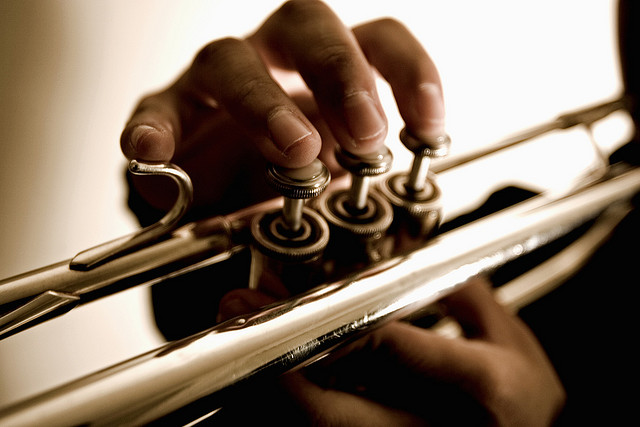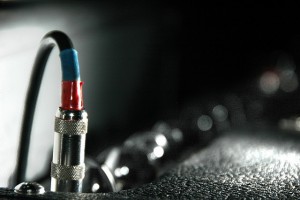(2 min read) As a student I was a latecomers to seriously studying music, and as we know it takes a lot of practice to be excellent at any instrument (yes, voice is an instrument). As a first year undergraduate I had a great friend who gave me a present to help with my practising. It was a pink mini-Fender Amp that had a slot in the back for a 9v battery, an input and an output. I used it for years until it finally went to live with the other amps in the sky. (Photo CC-BY by S.Su)
What was it for? Scales and intonation. That’s right, my little pink Fender amp was a drone machine for me and it would be hooked up to my digital tuner and blast out sine tones (like these) so I could have a solid, fixed reference pitch as I practiced. I used it religiously everyday – and I needed to! There was no quick fix for developing an inner ear or learning the placement of fingers on a fretless instrument. I quickly realised that as a cello player, I thought about notes, and scales, mainly in a melodic context. What I mean, is that I didn’t have that key harmonic reference in my head like another musician might. (Photo CC-BY-NC by Bill Selak)
The amp was a stepping stone for me. As I plugged away learning the patterns for my scales and solidifying the geography of the fingerboard it helped to keep me on track. The next step was to create that drone myself, with my voice. The magic of this (once you get over the fact that you are not supposed to sound like a diva holding a low G -or whatever note- for a minute or more) was that the combination of the voice and the cello notes interacted in a very physical way. I could FEEL the vibrations of the different intervals. So an octave really felt smooth as glass, whereas the major 7th had a sawtooth edge that produced very tangible harmonic beats. These were different from the more textured velour of a 3rd. It is a real challenge to hold a pitch steady when the interval is moving, and not to waver. Really, give it a go – even if you sing against that sine wave generator I linked to – play a note on it (turn it up so the volume matches your voice) and sing a scale. You’ll feel those intervals too.
It is a practice that taught me to tune in, literally, as well as to get into the mental space where I could really listen. Scales became more than rushing through the Galamian finger pattern of ‘stretch-stretch-squash-squash-squash’ (which is how to play a major scale on a violin/viola/cello staring on any note) and moved into a real tool for teaching me about relationships of notes and balance within my hand and the sound.
Do I still do it? Yes.
Do I make my students do it? Yes.
Do they think it’s silly? Yes, and I volunteer to sing the first drone – and we all laugh. It is very good to laugh. …and then to practise some more!
Don’t forget this week’s #MUS654 Hangout/Webinar happening on Wed. 30th September at 6pm BST. We’ll be talking about scales and the relationship of notes, and I look forward to welcoming Roozbeh Golpaygani روزبه گلپايگانى who will be sharing his knowledge of Persian music. You are more than welcome to join in the conversation in person or via Twitter.

